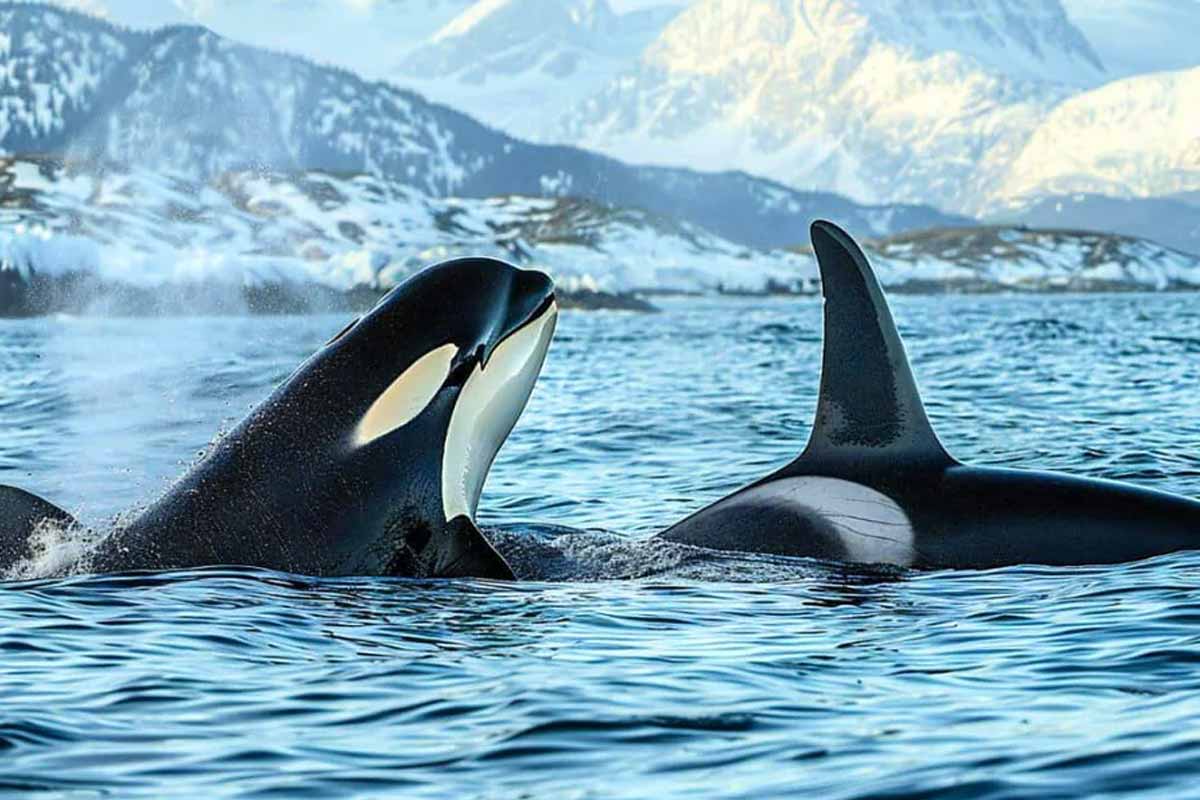The ocean is now a permanent address for dolphins and orcas. New research shows a decisive evolutionary lock. Mammals that once walked on land retooled their bodies for water, and the shift cannot reverse. The study traces deep-time steps, compares living species, and explains why adaptation, once past a threshold, becomes a one-way route.
Why dolphins and orcas cannot return to land
Researchers examined more than 5,600 mammal species to map the road from shore to sea. The team, led by Bruna Farina at the University of Fribourg, found a tipping point. After it, key traits no longer allow a terrestrial life to re-emerge.
Limbs reshaped into flippers, and tails became engines for thrust. Streamlining reduced drag while larger bodies retained heat in cold water. Reproduction shifted as births adapted to aquatic constraints, so life cycles now fit ocean conditions.
Because these changes work together, they resist reversal. The benefits match water, not land. Anatomy, metabolism, and behavior now form a closed system. As a result, dolphins and orcas are bound to marine habitats that shaped every modern feature.
How irreversibility emerges in mammals
The study, published in Proceedings of the Royal Society B, modeled evolutionary relationships. Branches on the tree of life revealed when traits appear and how they persist. The analysis showed small steps toward water are possible, yet some later steps are not.
Scientists identified a gradient: fully terrestrial species; species with some aquatic adaptations but still mobile on land; species with limited land locomotion; and fully aquatic groups. Moving along this gradient past a clear threshold locks in water-first biology.
This pattern reflects Dollo’s law. When a complex trait disappears, it rarely returns. The law helps explain why specialized anatomy and diets stay fixed. Consequently, even flexible hunters like dolphins and orcas cannot roll back millions of years of coordinated change.
What specialization gives—and what it takes
Specialization fuels marine success. Bigger bodies conserve heat, while a carnivorous diet sustains high metabolism. Hydrodynamic shapes slice through water, and precise echolocation refines hunting. Each feature solves a marine challenge, and together they raise performance.
Yet trade-offs follow. Traits perfect for water hinder land performance. Flippers cannot support body weight on shore, and tail propulsion wastes energy on land. Births adapted for water complicate terrestrial care. These constraints reduce the evolutionary paths open today.
Because specialization narrows options, resilience can suffer. If conditions shift fast, flexibility matters more than peak performance. Heavy reliance on marine food webs and thermal regimes means dolphins and orcas thrive while seas stay stable, yet they struggle when systems change quickly.
Evidence across lineages, timelines, and data
Land first, then sea : early vertebrates ventured ashore 350–400 million years ago. Mammals later returned to water around 250 million years ago. The transition to land happened once, while returns to water happened several times. That history frames today’s limits.
According to Proceedings of the Royal Society B, a figure summarizing mammalian phylogeny groups orders and log-transforms species counts in a bar plot. This broad context shows where aquatic transitions concentrate, and how many lineages sit near the irreversible threshold.
Farina noted that small steps into semiaquatic life remain feasible, but some fully aquatic adaptations cross a line. The team’s probability models back that view. Other experts, including Virag Sharma, highlight how these findings refine debates and invite tests across other tetrapods, not only dolphins and orcas.
The conservation stakes in a changing ocean
Irreversibility raises duty. Climate change warms waters, shifts prey, and amplifies heat stress. Acidification alters food webs and hearing ranges, while pollution harms physiology. When habitats erode, specialized species face higher risks with fewer exits.
Because the land route is closed, protection must focus on living seas. Safeguards include reducing emissions, limiting noise, curbing chemical runoff, and protecting key foraging grounds. Effective measures help populations hold steady while ecosystems adjust.
Policy also needs clear signals from science. Tracking population trends, enforcing maritime rules, and sustaining research keep decisions current. Healthy oceans lower risk and support the intricate biology that lets dolphins and orcas excel without options to retreat.
What dolphins and orcas reveal about irreversible adaptation
The study’s July 12 publication date anchors the result in current evidence. It integrates anatomy, ecology, and big-scale statistics. Because multiple traits change together, their network creates the lock. That mechanism, not a single gene, explains persistence.
Irreversibility is therefore practical, not mystical. Energetic budgets, thermal physics, and developmental pathways point the same direction. As selection keeps water-fit combinations, alternatives fade. Competing on land becomes costly and unrealistic.
Future work will test more lineages and refine thresholds. Yet the central message stands: specialization is powerful, and sometimes final. Managing seas with that reality in mind helps dolphins and orcas endure while the planet warms and the chemistry shifts.
Why this irreversible path now demands urgent global focus
The point of no return is not a sentence; it is a responsibility. Because dolphins and orcas cannot turn back, our choices at sea shape their future. Strong climate action, clean coasts, and quieter waters keep options within the ocean wide enough for life to persist.
